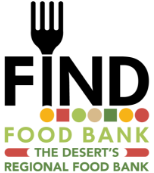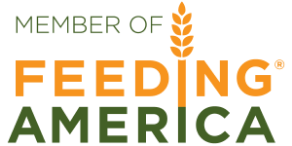Emergency Response
FIND is the regional disaster response food bank recognized by eastern Riverside County and the state of California. As the designated distributor of essential food services, we are prepared to handle disaster situations such as fires, earthquakes and, a global pandemic. After an earthquake, wildfire, or other major disasters, FIND will deliver emergency food and water supplies to designated areas throughout the desert region. Our local and county partnerships will increase access to essential supplies and equipment needed. Our everyday food distributions offer hunger-relief to help low-income and at-risk populations who face greater impact during natural disasters; however, FIND steps in to ensure ANYONE in need of food and relief in an emergency or otherwise has access to resources for as long as they need.


Providing Emergency Supplies
Power Outages
When high winds caused power outages in the eastern Coachella Valley, FIND Food Bank delivered water and non-perishable food items, while communicating with Riverside County Fourth District Office, RivCo Emergency Management District, and other local organizations to ensure there is proper allocation and sharing of resources.
Contaminated Water
Since Thursday (7/28) we’ve distributed water, food, Gatorade, and shelf-stable items to the Oasis Mobile Home Park residents. 1,100 people in our community have been living with contaminated water, unable to drink, cook, or bathe with clean water for months. FIND was called to provide relief for the individuals living on one gallon of water a day in triple-digit heat.
As the regional disaster response food bank for eastern Riverside County, we worked with the Fourth District Supervisor V. Manuel Perez’s Office, the County of Riverside Emergency Management Department, and Nestlé, who donated thousands of gallons of water to aid our rapid response. Thank you to the volunteers from TODEC Legal Center and the county for distributing these life-saving necessities!
Solar Panels Help Power FIND’s Disaster Response
To ensure FIND remains operational when disaster strikes, the state of CA helped fund a solar panel project to redesign energy consumption and storage at the food bank.
We’re excited to announce that Hot Purple Energy designed and installed a 40kW roof-mounted Solar Panel System with 150 kilowatt capacity of Energy Storage above our warehouse in Indio. With this System Design and Power Controls, along with FIND’s modification to its power consumption, FIND can operate independently from the Grid indefinitely in the event of an emergency. We will have controls in place to power minimum office activities and keep our coolers and partial freezers operating.
The annual production of the solar panel storage system is projected to save FIND Food Bank $22-25,000 a year. That’s funds that can be redirected to what matters most, our hunger relief programs feeding 150,000 people monthly with the capacity to serve even more people in times of disaster.
The Project was majority funded by a grant from the State of California in the amount of $498,000


Power Outage Preparedness and Recovery
When the Power Goes Out
Here is how you can keep food safe:
- Keep the refrigerator and freezer doors closed as much as possible to maintain the cold temperature.
- The refrigerator will keep food cold for about 4 hours if it is unopened.
- A full freezer will keep the temperature for approximately 48 hours (24 hours if it is half-full) if the door remains closed.
- Buy dry or block ice to keep the refrigerator as cold as possible if the power is going to be out for a long period. Fifty pounds of dry ice is recommended to keep an 18 cubic foot, fully stocked freezer cold for two days.
- To utilize your refrigerated or frozen meat, poultry, fish, or eggs while they are still at safe temperatures, please ensure each item is cooked thoroughly to a minimum internal temperature so that any foodborne bacteria that may be present are destroyed.
- Beef, Pork, Veal & Lamb Steaks, chops, roasts (145 °F)
- Ground Meats – 160 °F
- Ground Poultry – 165 °F
- All Poultry (breasts, whole bird, legs, thighs, wings, ground poultry, giblets, and stuffing) – 165 °F
- Eggs – 160 °F
- Fish & Shellfish – 145 °F
- However, if at any point the food was above 40º F for 2 hours or more (or 1 hour if temperatures are above 90 º F) — discard it.
Recover Food Once Power is Restored:
- Determine the safety of your food:
- If an appliance thermometer was kept in the freezer, check the temperature when the power comes back on. If the freezer thermometer reads 40° F or below, the food is safe and may be refrozen.
- If you do not have a thermometer in the freezer, check each package of food to determine its safety. You can’t rely on appearance or odor. If the food still contains ice crystals or is 40° F or below, it is safe to refreeze or cook.
- If the power was out for no more than 4 hours, refrigerated food should be safe as long as the doors were kept closed. When the power comes back on, check the temperature in the refrigerator or of the food.
- Discard any perishable food (such as meat, poultry, seafood, milk, eggs, or leftovers) that has been at refrigerator temperatures above 40°F for 4 hours or more. Perishable foods with temperatures that are 45°F or below (measured with a food thermometer) should be safe, but should be cooked and consumed as soon as possible.
- Perishable food such as meat, poultry, seafood, milk, and eggs that are not kept adequately refrigerated or frozen may cause illness if consumed, even when they are thoroughly cooked.
For more information, www.fsis.usda.gov/food-safety/safe-food-handling-and-preparation/food-safety-basics/safe-temperature-chart




